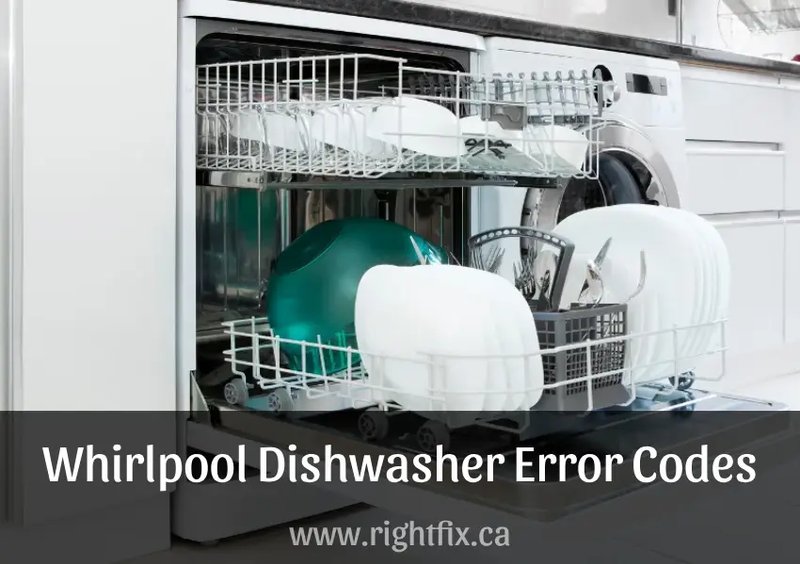
Imagine your dishwasher as a well-oiled machine, designed to clean your dishes with minimal fuss. The error code OE is essentially your dishwasher’s way of waving a little red flag and saying, “Hey, something’s not right here!” It’s a digital SOS from your appliance, typically indicating a problem with drainage. You might be tempted to look the other way, hoping the problem will resolve on its own. But ignoring this message is like ignoring the oil light in your car—it’s not advisable and could lead to bigger problems down the line.
Understanding the OE Error Code
When your Whirlpool dishwasher throws up an OE error code, it’s specifically pointing to a drainage issue. Picture a small garden hose trying to handle the water flow of a fire hydrant. That’s basically what your dishwasher feels when it can’t drain properly. This could be due to a clogged hose, a blockage within the pump, or even a kink in the drain line.
Think of the dishwasher’s water system as a carefully choreographed dance. If one partner stumbles, the entire performance is thrown off. The OE error code is a signal that something in this dance isn’t moving as it should. Water might be collecting at the bottom of your dishwasher instead of draining away like it’s supposed to. This not only affects the machine’s efficiency but could also lead to other issues like lingering odors or even water leaks.
The good news? With a little understanding, resolving the OE error is not as daunting as it seems. But first, let’s consider why it’s important not to ignore this issue. Keeping an eye on these signs is crucial because ignoring them can lead to more serious malfunctions or even damage to other parts of the dishwasher.
The Consequences of Ignoring the Error
Ignoring the OE error code is kind of like ignoring a small leak under your sink. Sure, it might seem harmless initially, but over time, that small leak could lead to significant water damage, mold growth, or even structural issues. Similarly, leaving the OE error unchecked can cause more serious problems with your dishwasher.
Water that doesn’t drain properly can cause standing water in the bottom of your dishwasher. This stagnant water becomes a breeding ground for bacteria and mildew, leading to unpleasant smells that are hard to get rid of. Imagine opening your dishwasher only to be greeted by a musty odor that makes your clean dishes seem not so clean after all.
Moreover, continuous drainage issues can lead to additional strain on the pump and motor of your dishwasher. Just like a runner who keeps pushing through a sprained ankle, your dishwasher might end up causing further damage to itself by trying to operate under less-than-ideal conditions. In the worst-case scenario, you might find yourself needing more extensive—and expensive—repairs, or even a replacement appliance.
Steps to Resolve the OE Error Code
Now that we understand the importance of addressing the OE error, let’s talk about how you can tackle it. First, check for any visible obstructions in the drainage path. This might be as simple as a piece of food stuck in the drain or a kinked hose. Imagine untangling a garden hose to get the water flowing smoothly again. That’s the kind of thing you’re aiming for here.
If the path seems clear but the problem persists, you might need to dive a bit deeper into the system. This can involve checking the filter—for this, think of it like cleaning out a lint trap in your dryer. Sometimes, it’s just a matter of clearing out debris that’s built up over time. Ensure that the filter is clean and that water can move freely through it.
If these basic steps don’t solve the issue, it might be time to call in professional help. Appliances, much like friendships, sometimes require expert intervention to get things back on track. A technician can help diagnose the problem accurately and address more complex issues such as a faulty pump or control board, which might be beyond the typical DIY fix.
Preventing Future Errors
Luckily, preventing future OE errors isn’t too complicated. It’s all about regular maintenance and a bit of TLC for your handy kitchen helper. Think of it like taking your car in for regular oil changes to keep it running smoothly. Similarly, routine checks on your dishwasher can go a long way.
Start by ensuring you’re not overloading your dishwasher. Imagine trying to pack a suitcase to the brim and then wondering why it won’t close. Overloading can prevent water from circulating properly and lead to drainage issues. Also, make it a habit to scrape off any large food particles before placing dishes in the dishwasher, as this can help prevent debris from clogging the drains.
Regularly inspect and clean the dishwasher’s filter and spray arms to ensure they’re free from obstructions. This might seem like a small chore, but it’s an effective way to keep your appliance running efficiently. By giving your dishwasher the attention it needs, you’re ensuring it will continue to serve you well.
In summary, addressing the OE error code promptly and maintaining your dishwasher regularly can save you from future headaches. Treat it like any other important relationship—one that thrives on attention and care.